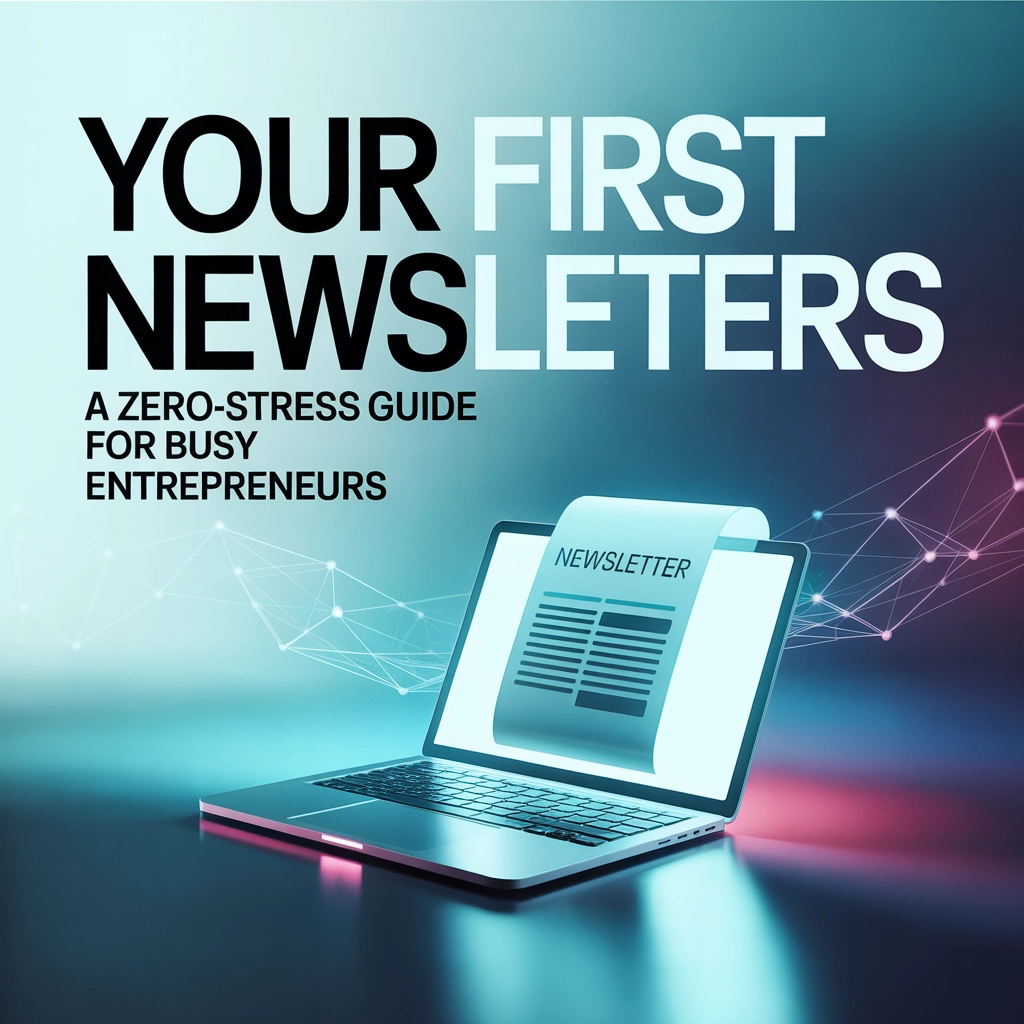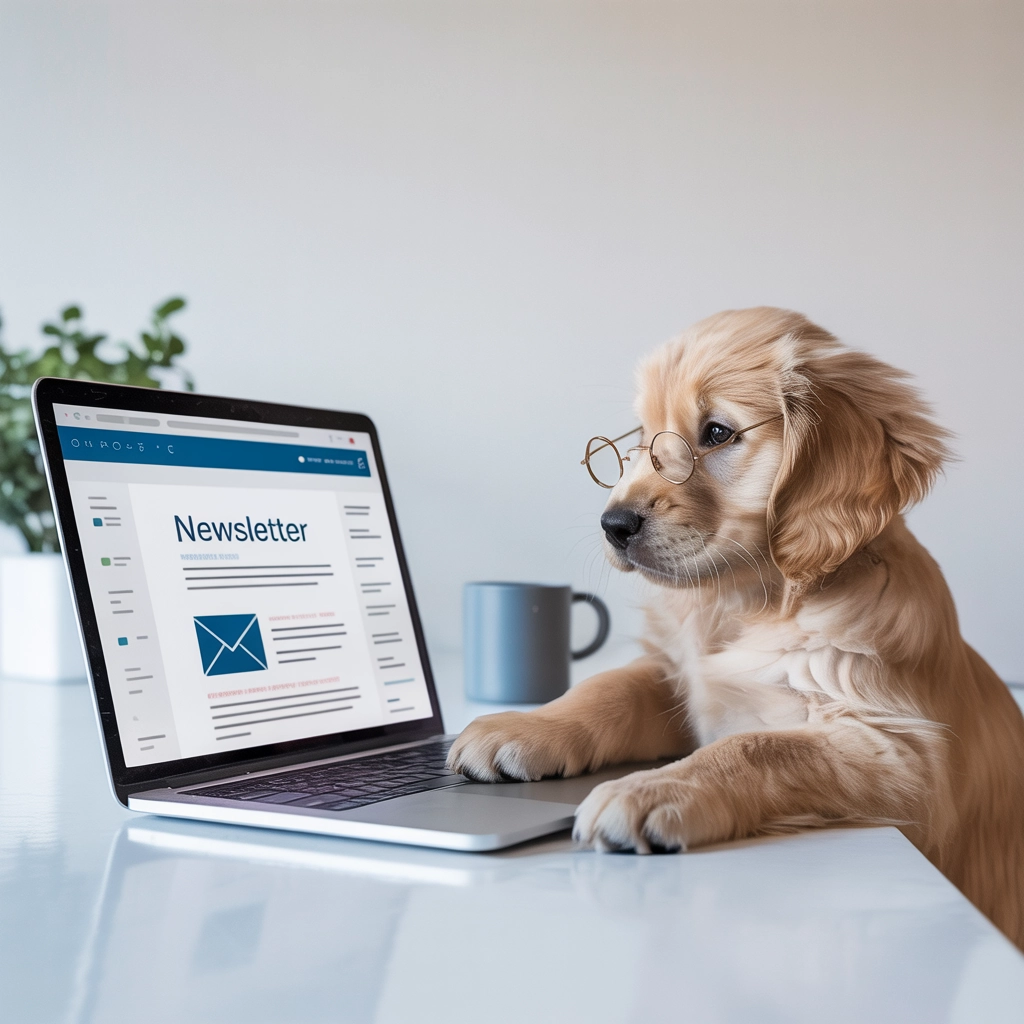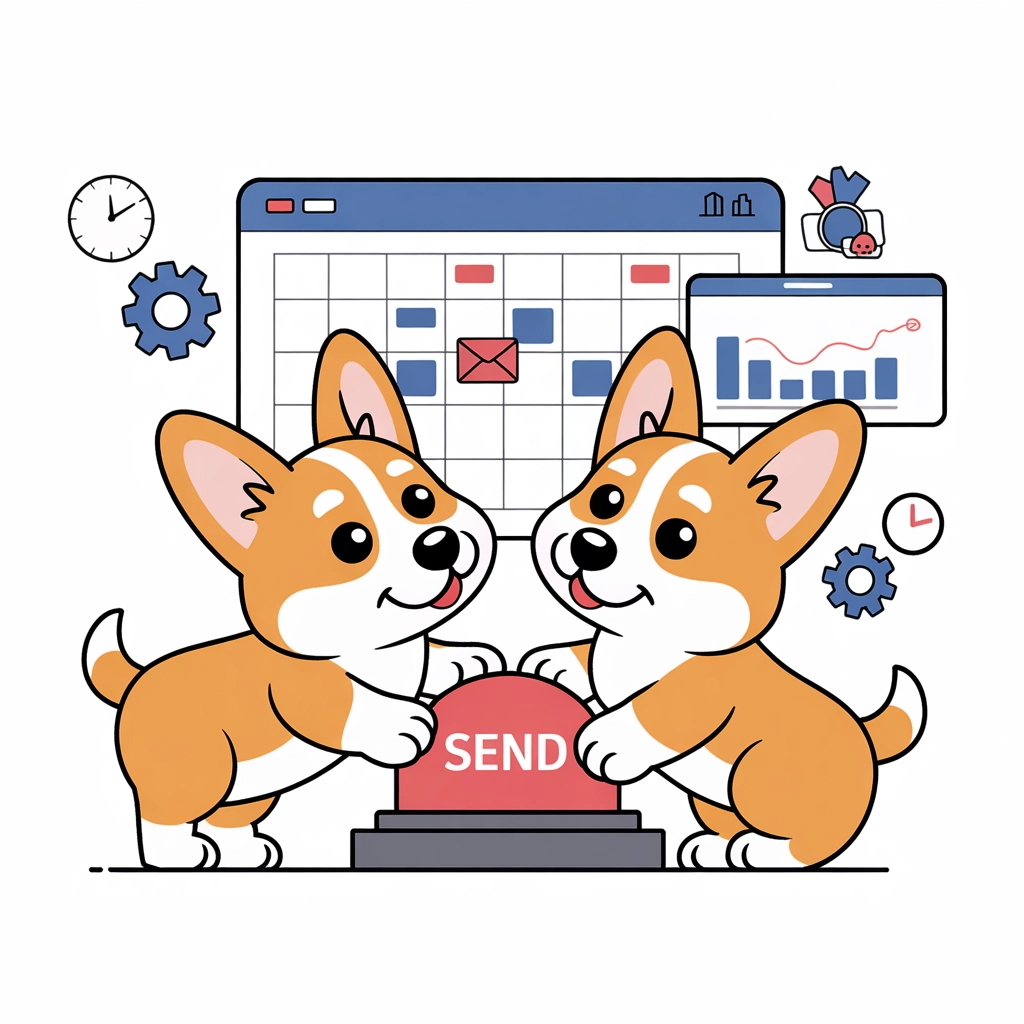Your First Newsletter: A Zero-Stress Guide for Busy Entrepreneurs
Launch an effective newsletter that practically runs itself, taking just an hour a week of your precious time. No stress, maximum results.

 🐾
🐾
Let's be real: as a small business owner, your to-do list is already bursting at the seams. The thought of adding "create and maintain newsletter" might make you want to run for the hills. But what if I told you that launching an effective newsletter doesn't have to be another energy-draining task?
Email newsletters remain one of the most powerful marketing tools available, with average ROIs of $36-$42 for every dollar spent. That's because you're connecting directly with people who've already shown interest in your business. No algorithm changes, no ad costs—just direct communication with your audience.
This guide will show you how to create a newsletter that practically runs itself, taking just an hour a week (or less) of your precious time.
Why Bother With a Newsletter Anyway?
Before diving into the how, let's quickly address the why:
- Direct access to your audience without social media platforms limiting your reach
- Relationship building that turns occasional customers into loyal fans
- Increased sales through regular, non-pushy reminders of your value
- Competitive edge since many small businesses still don't leverage email effectively
- Ownership of your contact list (unlike social followers that platforms control)
Now let's get into the zero-stress approach to making this happen.
Step 1: The One-Hour Setup
Your first hour with your newsletter is the most important. Instead of jumping straight to writing, use this time to create systems that will save you countless hours later.
Choose the Right Platform
Select an email service provider that prioritizes automation and ease of use. For small businesses just starting out, these options stand out:
- MailerLite: Free for up to 1,000 subscribers, incredibly user-friendly
- ConvertKit: Specifically designed for creators and small businesses
- Flodesk: Flat-rate pricing regardless of subscriber count, beautiful templates
The key is finding a platform that doesn't require a PhD to operate. All three options above have drag-and-drop editors and pre-built templates that make design simple.
Set Up Your First Template
Don't start from scratch. Use a pre-built template and customize it with:
- Your logo
- Your brand colors (just 1-2 is fine)
- A simple, mobile-friendly layout
The simpler your template, the less time you'll spend fussing with design details and the more professional it will look. Remember: clarity trumps cleverness when it comes to email.

Step 2: Content Strategy (Without the Headaches)
The biggest newsletter killer is trying to create brand-new content for every issue. Instead, embrace these time-saving approaches:
The Content Recycling Method
You're already creating content in some form—social media posts, customer FAQs, product descriptions, or even conversations with clients. Your newsletter can repurpose this existing content:
- Expand a popular social post into a more detailed explanation
- Answer FAQs you've received recently
- Share behind-the-scenes glimpses of projects you're already working on
- Curate industry news with brief commentary (which you're probably reading anyway)
The 3-Block Template
Structure every newsletter with the same three sections to eliminate decision fatigue:
- Personal/Business Update: A quick paragraph about what's new (1-2 sentences)
- Main Content: Your repurposed content or curated information (the meat of your email)
- Call to Action: What you want readers to do next (book a call, check out a product, etc.)
This structure creates consistency for both you and your readers, making it easier to fill in the blanks each time.
Batching for Sanity
Set aside 2 hours once a month to draft 4 weekly newsletters or 1 hour for 2 bi-weekly newsletters. Working in batches is dramatically more efficient than trying to create content on a weekly deadline.
Step 3: Automation is Your New Best Friend
Here's where the real time-saving magic happens. Modern email platforms offer automation features that can cut your newsletter management time by 80%.
Welcome Sequences
Create a simple 3-email welcome sequence that automatically sends when someone subscribes:
- Email 1: Welcome and what to expect (sends immediately)
- Email 2: Your best resource or tip (sends 2 days later)
- Email 3: Invitation to engage further (sends 4 days later)
This sequence runs on autopilot, nurturing new subscribers without any additional effort from you.
Content Triggers
Set up systems that automatically populate your newsletter with content:
- RSS-to-email: If you have a blog, connect your RSS feed to automatically pull in new posts
- Social media integration: Some platforms can automatically pull in your most engaging social content
- Recurring segments: Create templates for regular features like "Tip of the Week" that follow the same format

Scheduling and Batching
Schedule your newsletters in advance during your monthly batching session. This eliminates the stress of looming deadlines and ensures consistency even during your busiest periods.
Step 4: Growth Without the Grind
Growing your list doesn't have to mean constant hustling. These passive list-building strategies work while you focus on other aspects of your business.
Website Optimization
Place subscription forms strategically:
- In your website footer (sitewide visibility)
- At the end of blog posts (when readers are most engaged)
- On a dedicated "Newsletter" page that explains the benefits
- As an exit-intent popup (appears when someone is about to leave)
Lead Magnets That Work While You Sleep
Create one high-quality lead magnet—a free download that solves a specific problem for your audience. Options include:
- A simple checklist or cheat sheet
- A template relevant to your industry
- A mini-guide on a common challenge
- A resource list that saves research time
Once created, this lead magnet continuously attracts subscribers without ongoing effort.
Leverage Existing Touchpoints
Add newsletter signup opportunities to business processes you already have:
- Invoice follow-ups
- Order confirmation emails
- Business cards and printed materials
- Email signature links
Step 5: Measure What Matters (Quickly)
Analytics can become a time-sink if you're not careful. Focus on just three metrics, reviewed monthly:
- Open rate: Are your subject lines working?
- Click rate: Is your content compelling action?
- Growth rate: Is your list growing, stagnating, or shrinking?
Most email platforms provide simple dashboards with these metrics. Spend 15 minutes monthly reviewing them and make one adjustment based on what you learn.

The One-Hour-Per-Week Maintenance Plan
Once your newsletter system is established, here's how to maintain it in just one hour per week (or two hours bi-weekly):
Week 1: Initial Setup (3-4 hours one time)
- Choose platform and create account
- Design simple template
- Set up automation and welcome sequence
- Add signup forms to website
Ongoing (1 hour per week or 2 hours bi-weekly):
- 15 minutes: Review performance metrics from previous send
- 30 minutes: Draft content (mostly repurposed)
- 15 minutes: Schedule and test email
Conclusion: Your Newsletter, Your Asset
The beauty of this approach is that it creates a valuable business asset without becoming another full-time job. Each subscriber represents a direct connection to someone interested in your business—a connection that becomes more valuable over time as you consistently show up in their inbox.
Start small, focus on automation, and leverage content you're already creating. Your future self (and business bank account) will thank you for the consistent effort without the added stress.
Remember: the best newsletter is the one you actually send. Perfection is the enemy of done, especially for busy entrepreneurs. Keep it simple, make it sustainable, and watch your business grow one email at a time.
 🐾
🐾